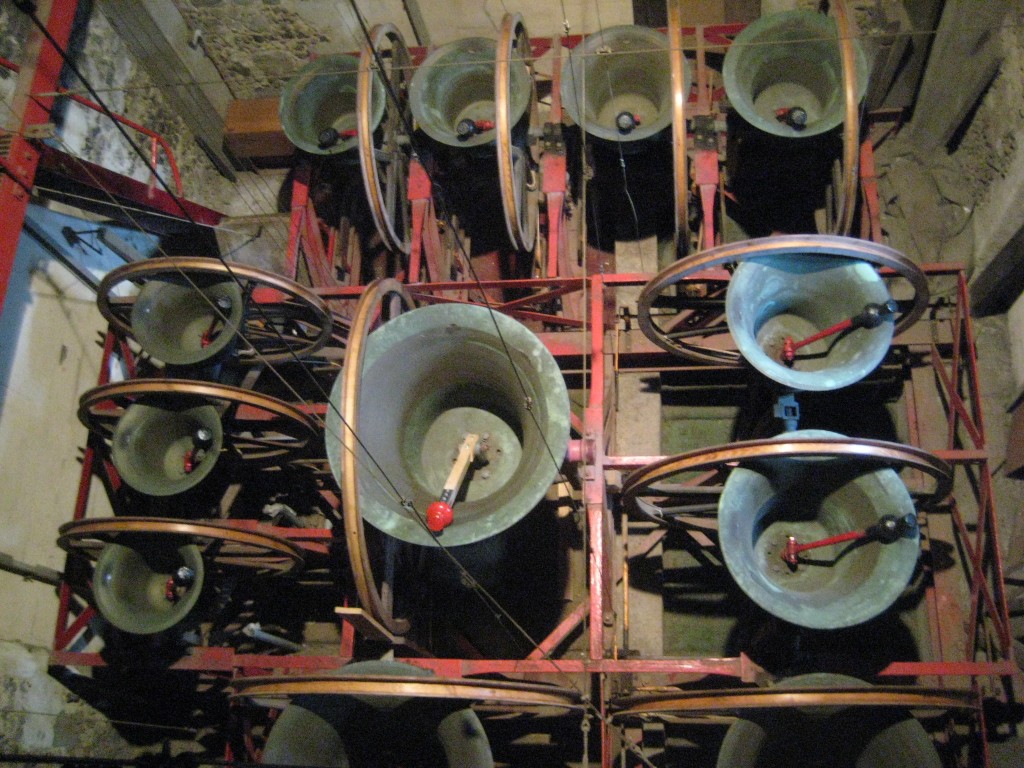The earliest records of bells in Kingston are in the 16th century, then in 1681 a new frame was installed and the ring was increased from six to eight. This is around the time that change ringing was becoming an established art, and we can speculate that change ringing started in Kingston at this time.
The photo shows a view of the bells from above. The tenor is in the centre, 1, 2 and 3 on the left of the picture, 4, 5, 6 and 7 at the top, 8 and 9 on the right, and 10 and 11 out of view at the bottom.Note the wooden clapper shaft on the tenor.
Then in 1748 these bells were recast and increased to 10 by Robert Catlin of Holborn. During the seventeenth and eighteenth centuries there was considerable rivalry between towers, and the fact that Kingston had a ring of 10 bells by the mid eighteenth century suggests that the town and church had considerable importance.
Further recasting of individual bells took place at several times up to 1936, when a major refurbishment resulted in a ring of 10 with a tenor of 27cwt. Over the years these bells became somewhat difficult to ring, although they were held in considerable affection by the ringers, not least because of the unusual anti-clockwise rope circle.
Finally, in 1972, the wooden frame was replaced by a new metal one, and the bells were increased to 12, this time with a conventional clockwise rope circle. Six of the old bells were kept and the other four were recast to form the treble, 2nd, 3rd, 6th, 10th and 11th of the new ring.
Details of the current bells
| Bell | cwt-qrs-lbs | Bell | cwt-qrs-lbs |
|---|---|---|---|
| Treble | 3-2-3 | 7th | 6-0-11 |
| 2nd | 3-3-5 | 8th | 6-1-16 |
| 3rd | 3-3-12 | 9th | 8-2-16 |
| 4th | 4-2-20 | 10th | 10-0-18 |
| 5th | 5-0-6 | 11th | 13-0-21 |
| 6th | 5-2-6 | Tenor | 18-3-27 |
